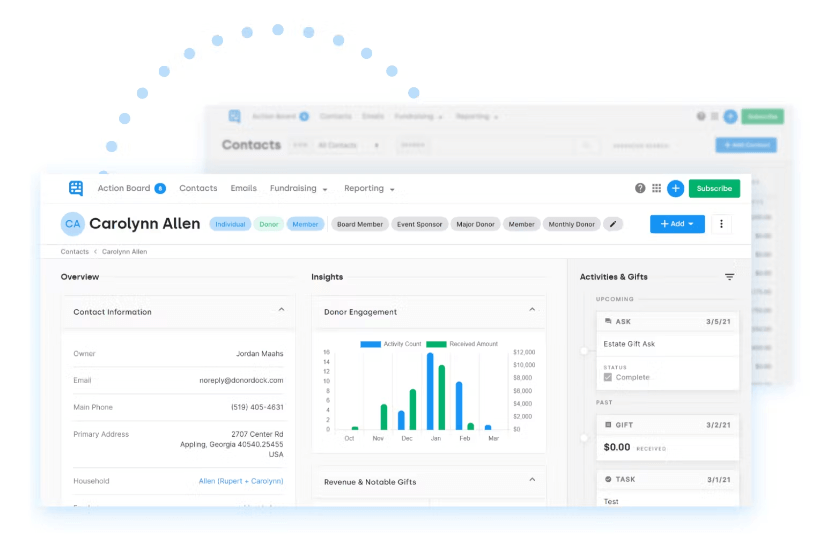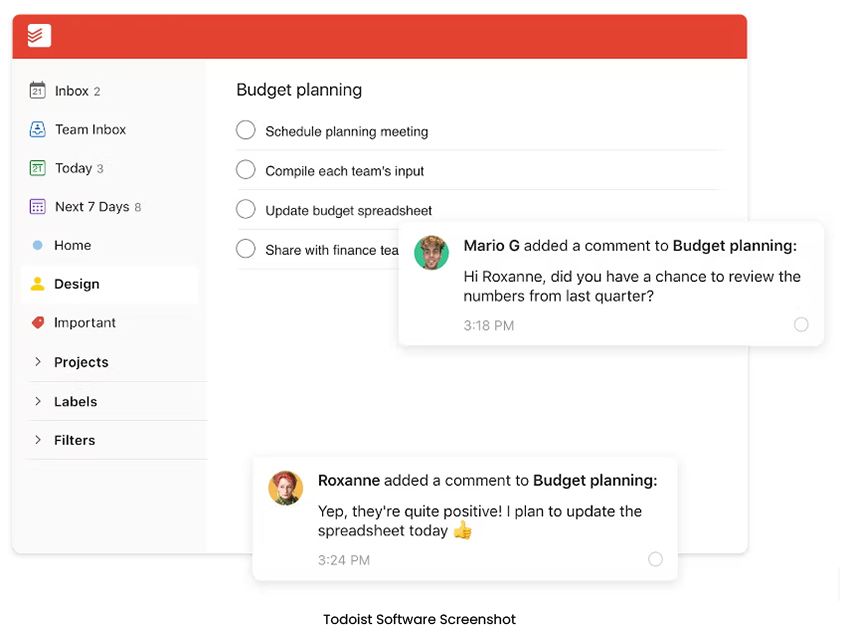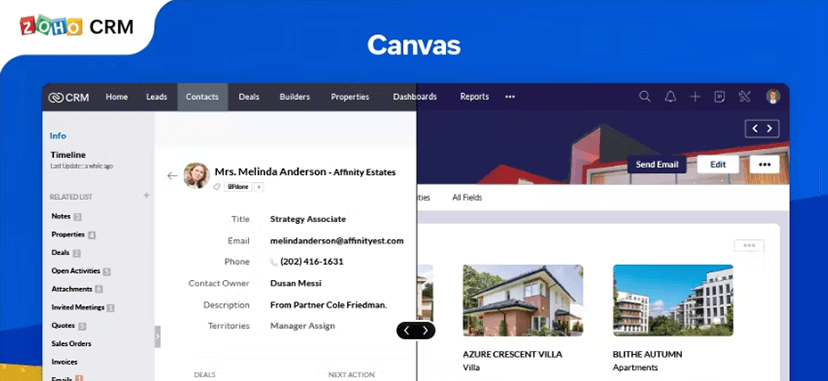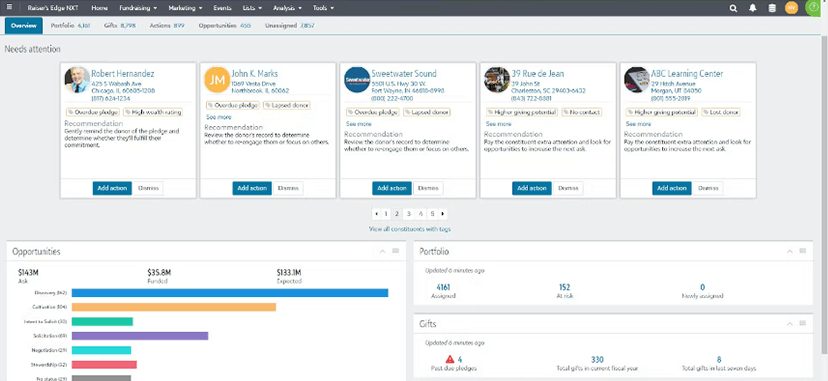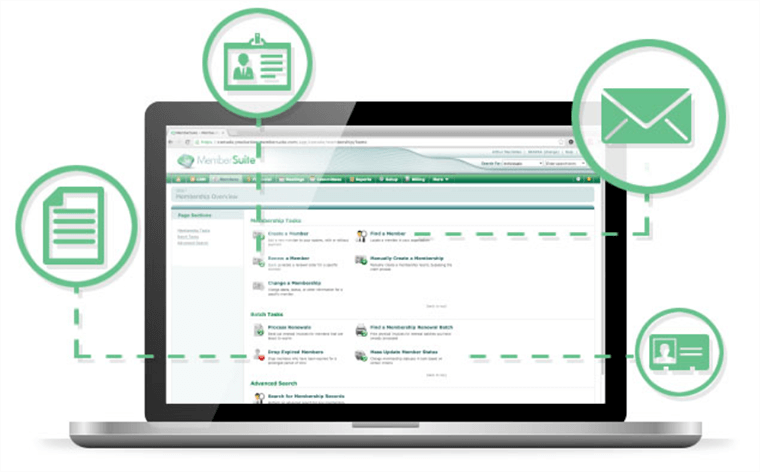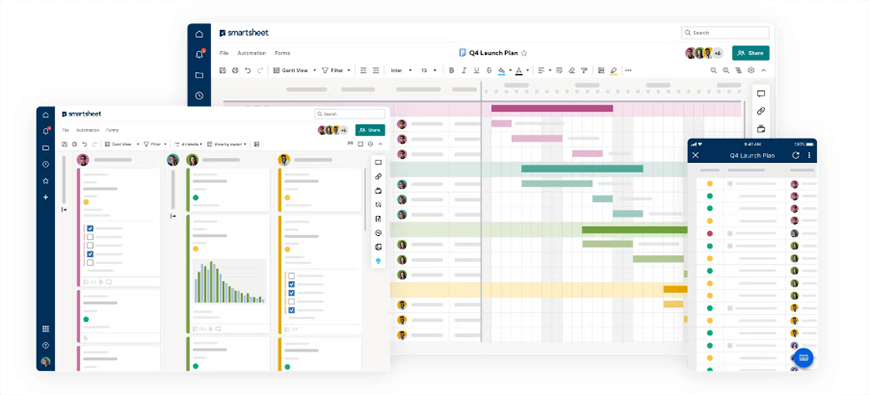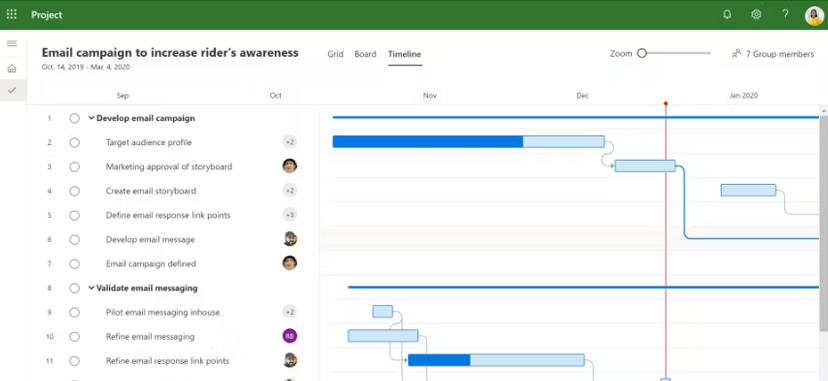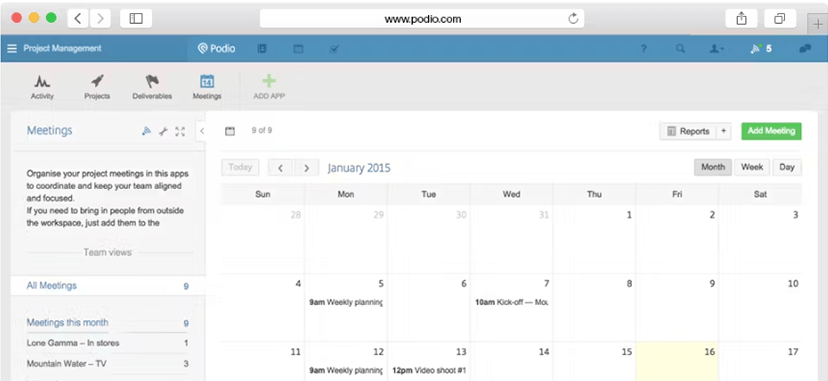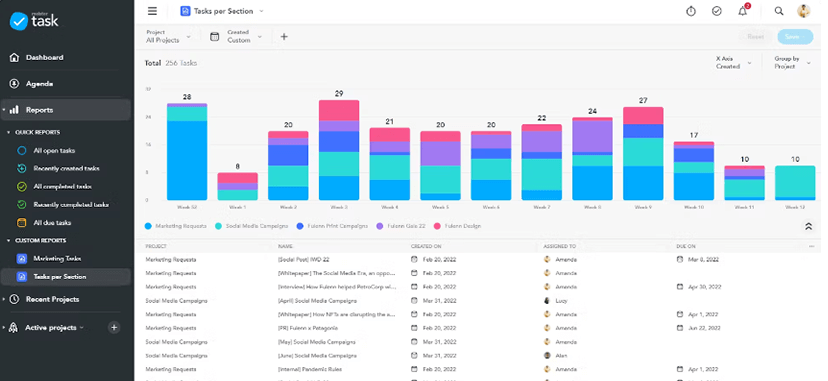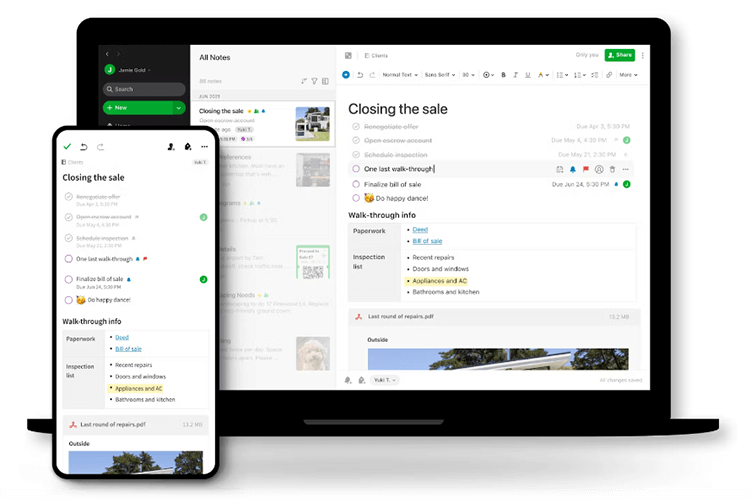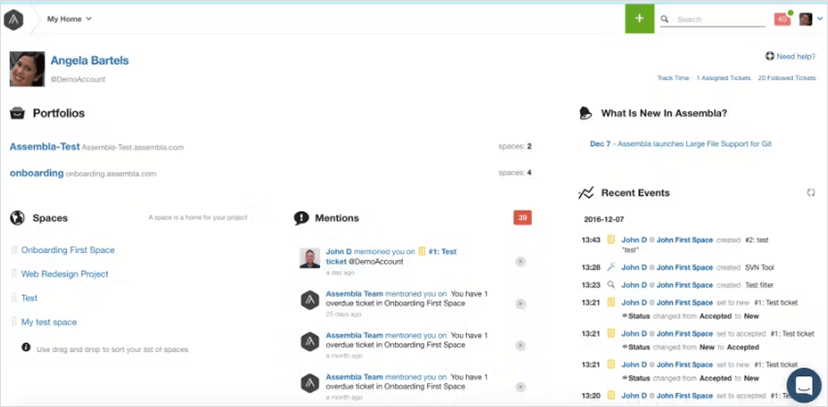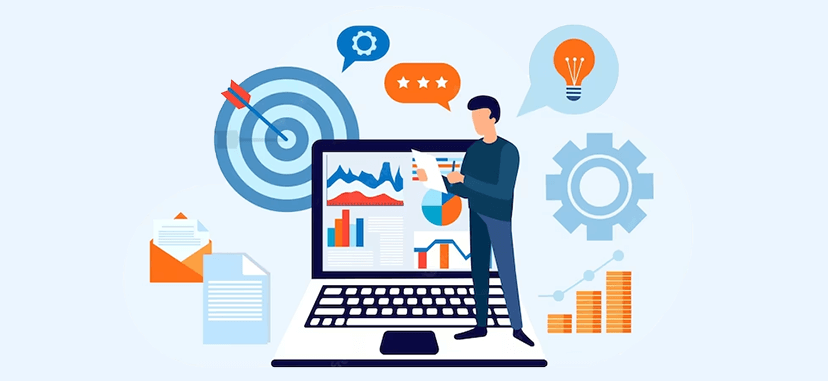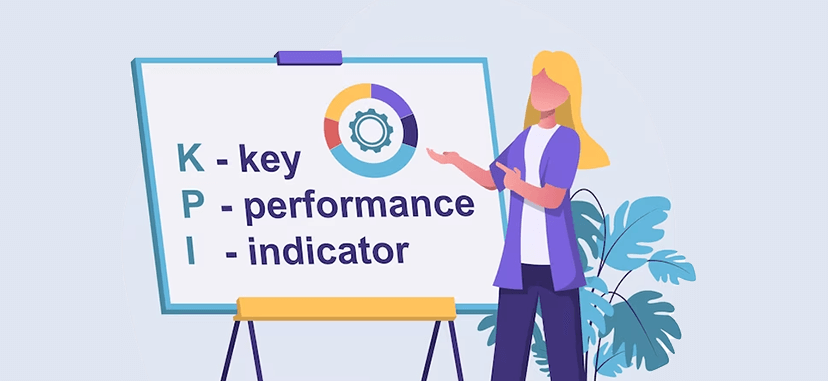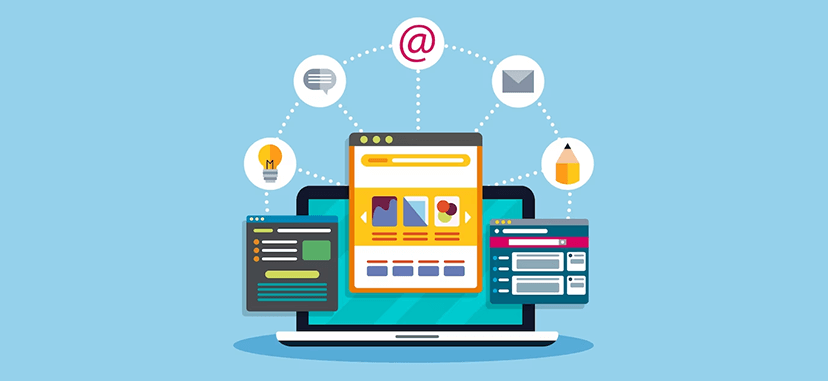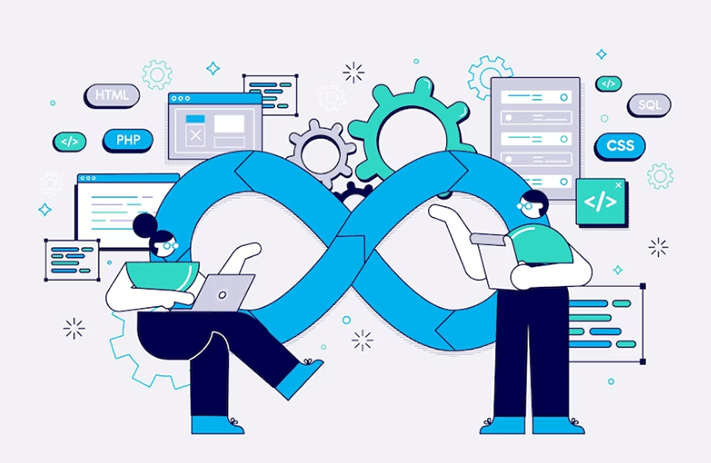Meet Emma, a healthcare practitioner with years of experience in the industry. Recently, she got to lead a major project at the hospital where she works.
As excited as she is about the project, Emma quickly realizes she has no training in healthcare project management. Despite her expertise in healthcare, she feels uncertain and overwhelmed.
This assumed experience isn’t unique. Many healthcare professionals find themselves leading projects without knowing the specifics of project management in healthcare.
But if you’re looking to move from ideas to results, you need the knowledge and tools to be a success. Healthcare project managers can navigate the nuances of project management in healthcare by focusing on strategy, people, and processes. Moreover, they can provide every team with strategic leadership and guidance.
In this blog post, we’ll explore the importance of project management in healthcare and share the methodologies project managers can use. Then, we’ll look into the impact of technology on healthcare projects and, finally, share useful tools for effective project management.
So, if you want to enhance your project management practices, read on to learn more.

What is project management in healthcare?
At its core, project management in healthcare is about achieving efficiency and effectiveness in delivering healthcare services. In other words, it’s the application of effective planning, organization, and control techniques to complete healthcare projects successfully.
In healthcare, project management can be likened to conducting an orchestra. A good manager must bring together a diverse group of individuals with unique talents and skill sets. Afterwards, she must guide them towards a common goal – just as a conductor does with musicians. In healthcare, the “musicians” are the doctors, nurses, technicians, and administrative staff. All of them play an important role in delivering quality care. A competent project manager must communicate effectively, delegate tasks, manage resources, and ensure everyone is working towards the same objective. In this context, integrating a FHIR platform can significantly enhance the harmonization of healthcare data, streamlining the management process much like a conductor fine-tuning the performance of an orchestra.
However, healthcare also has its unique challenges. First the need for patient confidentiality. Next, the necessity for strict adherence to regulations and protocols. Third, the pressure to deliver the best possible care to patients. A good manager must navigate these challenges while still maintaining a cohesive and efficient team.

How to use project management for healthcare
Many healthcare organizations rely on project management to successfully plan and execute projects and improve patient care. This is what makes project management and healthcare a critical partnership.
Now, let’s look at examples that demonstrate the importance of project management in healthcare.
Electronic Health Record (EHR) implementation
Implementing a new EHR system in a healthcare organization involves extensive planning, resource allocation, and coordination across various departments. But how can you ensure a successful EHR implementation? First and foremost, you should bring in a competent project manager to handle a wide range of tasks. It’s important to define project requirements, select the appropriate EHR system, and coordinate with vendors. Finally, the project manager should take care of training staff on the new system.
Facility construction or renovation
Building a new healthcare facility or renovating an existing one is a tough call. It requires careful planning, budgeting, and coordination between multiple stakeholders, such as architects, contractors, and healthcare providers. In this scenario, a project manager oversees the entire process. At the same time, she ensures that the project meets the required standards and timelines.
Quality improvement initiatives
You can’t implement quality improvement initiatives in healthcare organizations without cooperating with multiple departments and stakeholders. That’s why, to ensure the success of such initiatives, project managers need to complete several steps. They identify areas for improvement, develop an action plan, assign tasks to team members, and monitor progress.
Clinical trials
Project managers overseeing clinical trials must select sites, coordinate with investigators, and meet all regulatory standards. Also, they must clearly define study objectives to ensure success.
Pandemic response
Responding to a pandemic requires a coordinated effort across various healthcare organizations, government agencies, and community groups. Project management in this scenario involves coordinating resources, implementing mitigation measures, and monitoring the pandemic’s impact on public health.

Project management in healthcare Examples and lessons to learn from
Healthcare projects provide valuable information on what matters in project management. Besides, they pinpoint how you can avoid wasted resources and delays. Here’re two examples of healthcare project management that’ll give you insights into the major challenges and achievements:
Example #1: UK National Programme for IT (NPfIT)
The UK’s National Programme for IT (NPfIT) started in 2002 with a budget of £6.2 billion. Its goal was to digitize healthcare in England’s National Health Service (NHS) and bring information technology into the 21st century.
However, the program failed to gain the doctors’ trust and didn’t have a significant impact on patient safety. Local organizations resisted the centralized decision-making, which caused the dismantlement of NPfIT in 2011.
As NPfIT was the largest civil IT program in the world, its failure sparked an interest. In fact, the project was incredibly complex. It involved multiple stakeholders, systems, and processes, thus requiring a lot of effort to manage tasks effectively. Aside from that, the project lacked flexibility; the approach taken didn’t allow for changes in the project’s direction or scope as issues arose.
To sum up, we can single out three main reasons for the failure. These were the lack of end-user engagement, absence of change management, and underestimation of the project’s scale.
Example #2: Children’s Hospital Los Angeles (CHLA) EHR implementation
Children’s Hospital Los Angeles (CHLA) was going through a significant undertaking. It was implementing an EHR system (Electronic Health Record system) which came with its fair share of challenges and successes.
Let’s discuss them one by one:
Issues:
- Resistance to change: As with many EHR implementations, one of the biggest challenges was resistance to change from staff. The new system required significant changes to workflow and documentation, which took time to adapt to. Inevitably, it caused some initial frustration.
- System complexity: CHLA’s EHR system was highly complex, with numerous modules and integrations with other systems. This complexity made the implementation process more challenging and required significant training and support for staff.
- Data migration: Migrating existing patient data from the old system to the new EHR was a big challenge. Without a doubt, it required careful planning and coordination to transfer data accurately and without interrupting patient care.
Successes:
- Improved patient safety: The new EHR system at CHLA was designed with safety in mind. It had features such as automated medication order entry and decision support to reduce the risk of errors.
- Enhanced clinical workflow: Yes, there was initial resistance to change. But the new system ultimately led to more streamlined and efficient clinical workflows. Consequently, the staff started to spend more time with patients (and less time on paperwork!).
- Better data analysis: The new EHR system provided CHLA with better tools for data analysis. This enabled the team to identify trends and improve care quality more effectively.
- Increased patient and family engagement: CHLA’s EHR system included a patient portal. Now, patients and families could access their health information and communicate with care providers more easily. As a result, this improved engagement and satisfaction, leading to better results.
Overall, the EHR implementation at CHLA was a challenging but ultimately successful project that improved patient safety, enhanced clinical workflows, and increased patient and family engagement.

Stages of healthcare project management
Typically, healthcare project management involves four stages. You must carefully plan and execute each of them for successful project completion.
Stage 1: Planning
The first stage is planning, where the project manager must identify the project’s goals, objectives, and scope. Chiefly, this includes defining the project requirements, establishing timelines, and identifying the necessary resources and stakeholders.
Pro tip: Develop a detailed project plan that outlines the project goals, objectives, scope, timelines, and deliverables. This will keep all stakeholders on the same page and enhance a clear understanding of the project’s requirements.
Stage 2: Execution
Time to step up and put your plan into action! You’ll have to assign tasks to team members, monitor progress, and manage resources. You must ensure that the project is progressing as planned and that the quality of work meets the required standards.
Pro tip: Use healthcare project management software to track progress, communicate with team members, and manage resources effectively. With this, you’ll streamline workflows and improve collaboration between team members.
Stage 3: Monitoring
Regular check-ins are key to identifying any risks that may pop up during the project. Thus, the monitoring stage involves regularly assessing project progress and identifying any issues or risks. Certainly, you’ll make necessary changes on the go to ensure that the project stays on track.
Pro tip: Establish regular check-ins with team members and stakeholders to monitor project progress and identify any potential roadblocks. Issues popping up? You’ll be able to address them promptly and keep the project moving forward.
Stage 4: Completion
The final stage is all about delivering the project successfully. In this stage, you must take care of completing all project deliverables on time while sticking to the required standards.
Pro tip: Conduct a thorough review of the project. Make sure all deliverables meet the project requirements. Plus, celebrate the project’s successful completion and recognize team members for their contributions.
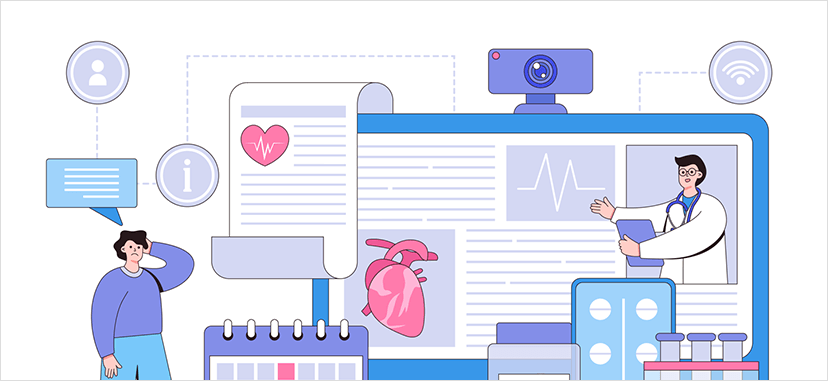
Seven tips for effective project management in healthcare
Effective healthcare project management requires a combination of technical skills, clinical knowledge, and leadership abilities. Here’re top tips and expert insights for effective healthcare project management:
1. Engage with stakeholders.
You need to engage with a wide range of stakeholders, including clinicians, administrators, and patients. By involving stakeholders in the planning, implementation, and evaluation of the project, you kill two birds with one stone. First, you align the project with everyone’s needs and goals. Secondly, you make sure that all parties have a stake in the project’s success.
2. Define clear project goals and objectives.
“If you aim at nothing, you will hit it every time.” Zig Ziglar’s words ring true more than ever. Truly, clear goals provide a roadmap for the project. You avoid the risk of going astray, and you can measure the project’s progress much more easily.
3. Develop a realistic project timeline.
Fail to develop a realistic project timeline, and you’ll doom your project management efforts. For this reason, a realistic timeline takes into account the complexity of the project, the resources available, and the potential risks and challenges.
4. Build a strong project team.
Every success starts with productive teamwork. A strong project team includes individuals with a diverse range of skills and experiences who can work together collaboratively to achieve the project goals.
5. Use data to drive decision-making.
Without a doubt, data is a powerful tool. It can help project managers identify potential problems early on, track progress, and evaluate the impact of the project.
6. Communicate effectively.
Remember, you never over-communicate in healthcare project management. As a project manager, you should communicate regularly with stakeholders, provide updates on progress, and address any concerns or issues that arise.
7. Monitor and evaluate the project.
Finally, you should track progress against goals and objectives. Thus, you can identify areas for improvement and make necessary adjustments to ensure that the project is successful.
Methodologies for healthcare project management
There are several methodologies for healthcare project management. Project managers can use them to plan, execute, and monitor healthcare projects effectively.
In this section, we’ll explore some of the most common methodologies:
1. Agile methodology
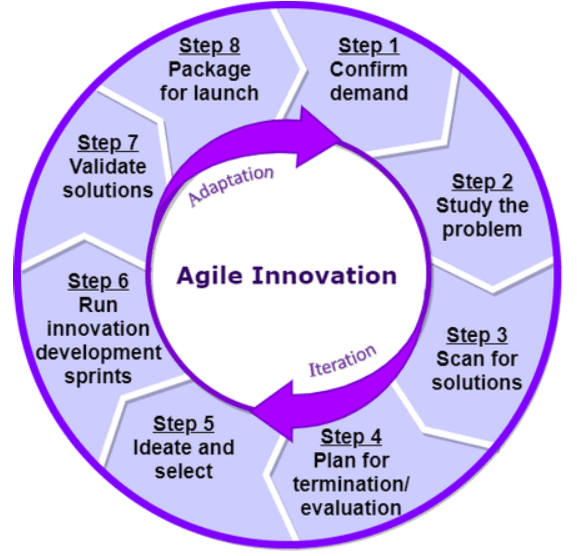
The steps in Agile methodology (Image credit: BMJ Innovations)
The key principles of Agile include frequent communication, continuous feedback, and continuous improvement. In fact, the effectiveness of agile teams has long been proved by research data. For example, Brain & Company survey reports that 75% of healthcare executives say that their agile teams perform better than the traditional ones.
The Agile methodology is an iterative approach that focuses on collaboration, flexibility, and adaptability. In essence, the agile methodology emphasizes collaboration between stakeholders, including patients, clinicians, and IT professionals. This collaborative approach takes into account everyone’s needs and perspectives, resulting in effective and efficient projects.
Plus, the Agile methodology allows for flexibility and responsiveness to changing needs and requirements. This is especially important in healthcare, where patient needs and clinical practices can evolve rapidly, and technology is constantly advancing.
Ultimately, the agile methodology allows for regular feedback and adjustment, ensuring that the project stays on track and meets stakeholders’ needs.
2. Waterfall Methodology
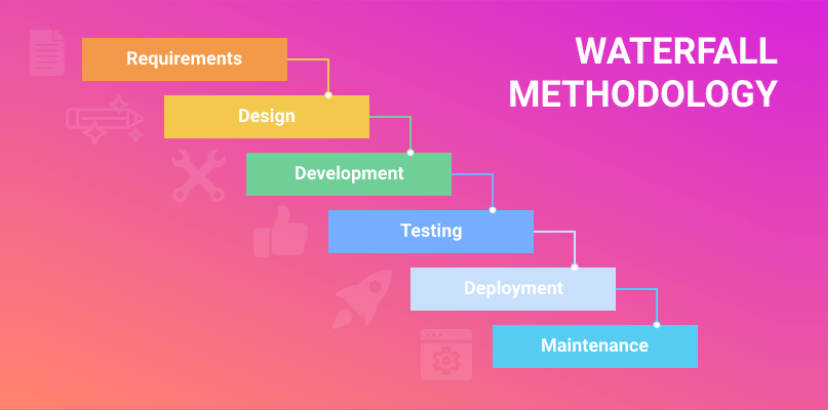
The phases of the Waterfall methodology (Image credit: Dektry)
The Waterfall methodology represents a linear workflow that divides the project into distinct phases. These stages include planning, design, implementation, testing, and maintenance. Frequently, this approach works most effectively for projects with defined scopes and predictable outcomes.
To clarify, the Waterfall methodology requires a thorough and detailed analysis of project requirements upfront. It’s particularly important in healthcare projects where patient safety and regulatory compliance are critical.
In Waterfall methodology, projects have distinct stages, with each stage building upon the previous one. Thus, this approach requires that you complete each stage of the project thoroughly before moving on to the next.
However, it’s important to recognize that the waterfall methodology may not be well-suited to all healthcare projects. Maybe you’ll have to consider other approaches if your project requires a high degree of flexibility to changing circumstances.
3. Lean methodology
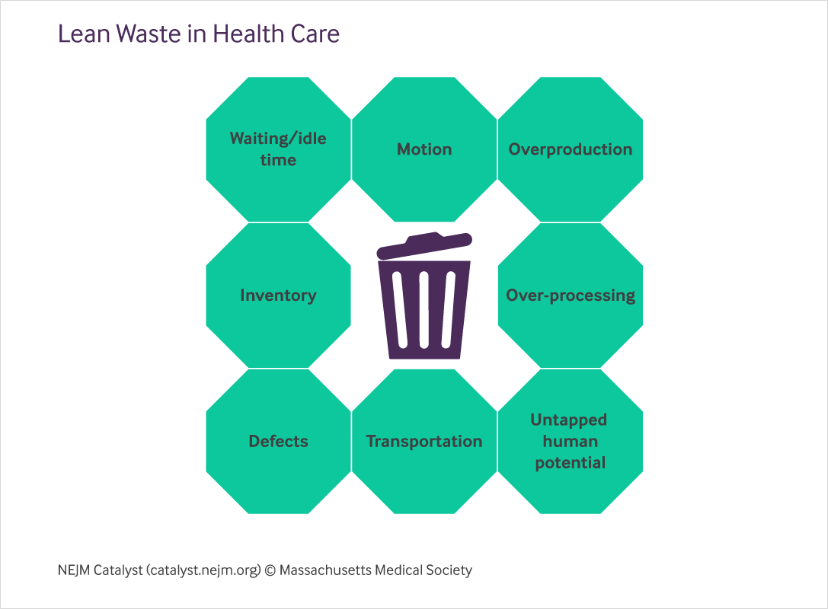
Eight areas of waste in Lean (Image Credit: NEJM Catalyst)
The Lean methodology is a process improvement methodology that focuses on eliminating waste, reducing variability, and improving efficiency. In healthcare project management, Lean can be used to improve processes such as patient flow, supply chain management, and clinical operations.
Virginia Mason Medical Center in Seattle gives us an example of using Lean methodology in healthcare project management.
In this project, the focus was on improving patient safety and outcomes, as well as reducing costs. The project team used Lean principles to identify and eliminate waste in clinical processes. This included reducing unnecessary tests, enhancing communication between staff members, and improving the flow of patients through the hospital.
As a result of the Lean transformation, the hospital saw significant improvements in patient outcomes. Plus, the hospital achieved significant cost savings, such as a reduction in supply costs and overtime costs.
4. Six Sigma methodology
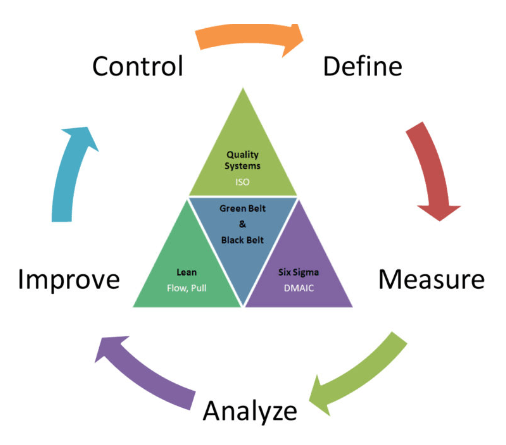
The stages of Six Sigma methodology (Image credit: Workzone)
The Six Sigma methodology is a data-driven process that focuses on four main aspects of process improvement. Thus, the emphasis lies on reducing waste, eliminating defects in processes, improving quality, and increasing customer satisfaction. In healthcare project management, teams use Six Sigma to improve processes such as medication errors, patient safety, and infection control.
Markedly, the Six Sigma methodology begins with defining the problem and identifying the process that needs improvement. In healthcare, this can involve identifying areas where you must improve patient outcomes or make processes more efficient.
Here’s an example. The Nebraska Medical Center used the Six Sigma methodology to improve patient outcomes and streamline clinical processes. To clarify, they aimed to address the high incidence of incomplete and unavailable physician orders. The reason was – it led to delays and errors in patient care.
Using the Six Sigma methodology, the project team collected and analyzed data on the process. Afterwards, they identified the root causes of the problem and implemented process improvements to address the issues. As a result, the incidence of incomplete orders fell from 59 per cent to 4 per cent. What’s more, the number of orders that were unavailable upon a patient’s arrival dropped to 7 per cent.
These are just a few examples of using different methodologies for healthcare project management. Note that each methodology comes with its strengths and gaps. So, you should select the methodology that’s best suited for your project’s specific needs and requirements.

How do technology and big data impact project management in healthcare?
Look around, and you’ll see a world that demands innovation. By the way, you can’t imagine innovation without technology and big data these days.
Surely, technology and big data have revolutionized project management in healthcare in a few specific ways:
Improved decision-making
Technology and big data enable healthcare project managers to access real-time information about patient health, resource allocation, and project progress. By analyzing this data, managers can make informed decisions that improve patient outcomes and streamline project management processes.
Predictive analytics
Technology and big data allow healthcare project managers to use predictive analytics to identify potential risks. As a result, they can address challenges before they occur. This helps managers to develop strategies to mitigate risks and keep projects on track.
Collaboration
With the introduction of collaboration tools, such as messaging platforms and video conferencing, healthcare professionals can communicate with ease. They can work together on projects from different locations, which allows for improved coordination and better decision-making.
Personalized medicine
Personalized medicine customizes medical treatments for individual patients by taking into account their genetic profile, lifestyle, and medical background. And this couldn’t possibly happen without the use of technology which helps to improve patient outcomes and reduce healthcare costs.
Improved patient engagement
Technology and big data have made it easier for healthcare project managers to engage patients in their healthcare. To explain, patient portals and mobile health apps are like personal health dashboards. They allow patients to track their health data, communicate with healthcare providers, and access educational resources.
Quality Control
Healthcare project managers can use technology to monitor project performance, identify issues, and make timely decisions. This includes quality control software that tracks progress, detects errors, and helps teams stay on track.
Example of using technology and big data in healthcare project management
The All of Us Research Program, launched by the National Institutes of Health (NIH) in 2018, has a clear goal. It aims to collect data from one million people across the US to improve health outcomes and develop personalized treatments.
The Program uses a combination of EHRs, mobile health devices, and genetic testing to analyze data from participants. Then, the data helps to identify patterns and trends in health outcomes, risk factors, and treatments across diverse populations.
One successful use of this data was in identifying genetic markers associated with opioid addiction. Researchers in the program were able to identify a genetic variant linked to an increased risk of opioid addiction. Obviously, these results could help to develop more personalized treatments for individuals with this variant.
Additionally, the program uses the data to inform healthcare project management decisions. These may include identifying areas for improvement in patient care and developing more targeted interventions to reduce health disparities.

Why use project management software in healthcare
There are several reasons why project managers in the healthcare industry should consider using project management software:
Gathers all data in one location
Healthcare project management software can save time and effort for hospital staff and reduce the risk of errors. With the power of software tools, you can centralize project-related information, automate repetitive tasks, and provide real-time project status updates.
Improves collaboration
What’s one of the most sought-after benefits of PM software? Right! It enables team members to communicate, share files, and collaborate on tasks in real time. Thus, project managers can improve the quality of project outcomes by ensuring that everyone’s efforts are in sync.
Enhances resource management
With the right tools, you can have a centralized view of resource availability and usage. Surely, this helps to optimize resource utilization and reduce waste. Digital tools can help to collect, store, and analyze patient data more efficiently. With electronic health records (EHRs), healthcare professionals easily solve multiple tasks. They can access patient data instantly, share information across departments, and make decisions based on accurate data.
Prevents compliance failures
Compliance is critical in healthcare project management. And healthcare project management software can help hospitals ensure compliance. How? It provides automated compliance checks, audit trails, and other compliance-related features to prevent violations.
Provides better visibility
What’s the current status of your project? Use software data to get real-time visibility into the status of projects, including key performance indicators (KPIs) and project milestones. Easily make more informed decisions and ensure that projects are on track to achieve your objectives.
Increases efficiency
Last but not least, digital tools help to automate routine tasks, reduce paperwork, and minimize manual data entry. Consequently, it becomes easier to save time and effort for hospital staff and focus on more critical tasks. With these benefits, investing in healthcare project management software helps hospitals improve patient care, reduce costs, and increase operational efficiency.
Best project management software for healthcare
The best healthcare project management software will depend on your team’s specific needs. Consider factors such as budget, team size, and project complexity when evaluating different options. Let’s explore the best options out there:
Teamly
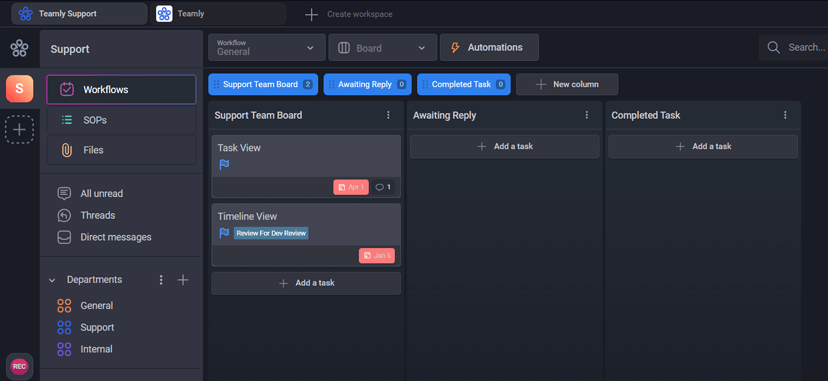
As remote work becomes more common and companies grow larger, project managers must find ways to improve collaboration between dispersed teams.
Teamly is a project management tool that can help to streamline communication and task management in healthcare projects.
Teamly integrates collaborative work, resource management, project management, and financial management solutions with a single goal. It aims to enhance cross-team communication and streamline processes. This fosters collaboration between remote employees, subcontractors, and clients, thus enhancing user experiences.
In this solution, communication channels go hand in hand with project management systems. Therefore, team members can collaborate in context, having easy access to data insights and all necessary tasks.
Best features of Teamly
- Task management features allow you to create and manage tasks related to healthcare projects, such as clinical trials, medical device development, or patient care. Assign tasks and set due dates to keep everyone on track.
- Team communication and collaboration: Teamly’s collaboration features can help to improve communication among healthcare team members, such as doctors, nurses, researchers, and administrators. Share project updates, feedback, and files in real-time to keep everyone in the loop.
- Time tracking: Struggling to track the time spent on healthcare projects? Use the software’s time-tracking feature to monitor progress and identify areas for improvement.
- Reporting: Use Teamly to generate reports on healthcare projects, such as progress reports, budget reports, and team productivity reports. By the way, these reports will help to evaluate project performance and identify areas for improvement.
Pricing
Teamly offers free project management software that can be upgraded to Pro and Business plans to cater to your growing needs and project requirements. The Pro plan starts at $5 per user per month, and the Business plan starts at $9 per user per month (billed annually).
Kareo
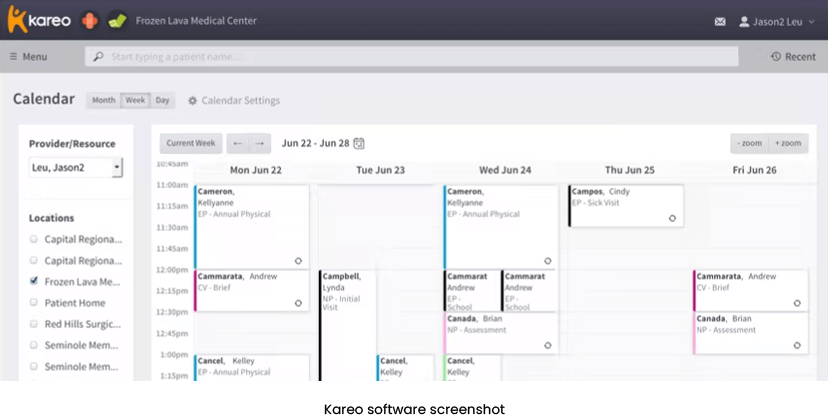
Designed for small to medium-sized medical practices, Kareo is a healthcare management software platform that provides medical billing and practice management solutions.
With this tool, you’ll be able to make appointments, manage claims and enjoy the opportunities of patient portals. Plus, the project management features will prove valuable for healthcare project management.
Best features of Kareo
- Scheduling: You can use Kareo’s scheduling feature to manage appointments and patient care schedules. It’s possible to set up recurring appointments for patients and view all appointments in a single dashboard to keep everyone on the same page.
- Patient management: The patient management features can help to manage patient information, including contact information, medical history, and insurance information. This information ensures that patients receive appropriate care.
- Billing: Managing insurance claims and payment processing are an important part of the financial aspects of healthcare projects. You can use the billing feature to manage accounts receivable and accounts payable and to ensure that billing is accurate and timely.
- Reporting: With the reporting features, you can generate reports on healthcare projects, such as financial reports, patient outcomes reports, and appointment scheduling reports.
Pricing
You should contact Kareo’s team to get pricing tailored to your practice. Answer a few questions and wait for their experts’ answers.
SimplePractice

Looking for ways to manage your practice from a single, centralized location? SimplePractice is a healthcare management software platform that provides practice management solutions for mental health professionals.
Best features of SimplePractice
- Scheduling: By using the scheduling tool, you can view appointments in a single dashboard and communicate appointment details with patients.
- Client management: Similarly, client management features enable healthcare professionals to manage patient information, including contact information, medical history, and insurance information. This information helps them tailor care plans to meet patients’ specific needs and monitor patient outcomes.
- Telehealth: With the use of telehealth, you can conduct virtual appointments with patients. By the way, this can be particularly useful in remote or rural areas. Use the benefits of telehealth to reduce costs associated with in-person appointments.
Pricing
Three pricing plans are offered: Starter, Essential, and Plus. The Starter plan starts at $29/mo.
Athenahealth
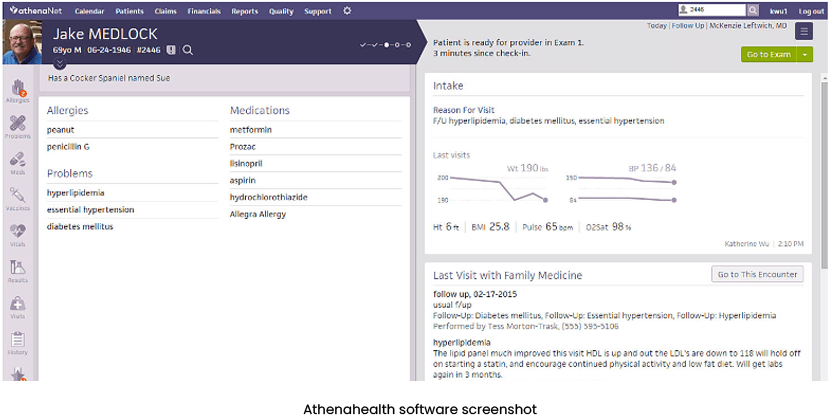
Medical billing, electronic health records (EHR), and practice management solutions. Healthcare organizations can enjoy all of this thanks to Athenahealth, a healthcare management software platform.
Best features of Athenahealth
- EHR: You can use the software’s EHR features to manage patient information, including medical history, test results, and treatment plans. With the help of this information, patients will receive appropriate care, and you’ll be able to track patient outcomes.
- Analytics: By using the analytics features, you can generate reports on healthcare projects, such as financial reports, patient outcomes reports, and appointment scheduling reports. Use these reports to evaluate project performance and identify areas for improvement.
- Patient Communication: Athenahealth’s patient communication features help to send reminders to patients about appointments, medications, and other aspects of their care. This can easily improve patient engagement and adherence to treatment plans.
Pricing
You should contact Athenahealth to get a personalized quote for the software.
Wrapping up!
In project management, healthcare is a specialized area. It requires expertise and knowledge to effectively manage the complexities of healthcare projects. These complexities make it vital to have excellent project managers who can manage resources, plan and execute tasks, and deliver projects within the set timelines and budget.
Healthcare project managers and project management software play a critical role in minimizing delays and reducing costs. What’s more, they ensure that healthcare project management aligns with organizational goals and priorities.
Ultimately, the success of healthcare organizations depends on two main factors. First, the project manager’s ability to innovate and adapt to changes in the healthcare landscape. Second, the power of the tools they use.


















